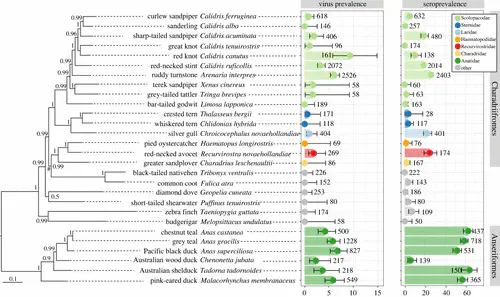Strong host phylogenetic and ecological effects on host competency for avian influenza in Australian wild birds

Abstract
Host susceptibility to parasites is mediated by intrinsic and external factors such as genetics, ecology, age and season. While waterfowl are considered central to the reservoir community for low pathogenic avian influenza A viruses (LPAIV), the role of host phylogeny has received limited formal attention. Herein, we analysed 12 339 oropharyngeal and cloacal swabs and 10 826 serum samples collected over 11 years from wild birds in Australia. As well as describing age and species-level differences in prevalence and seroprevalence, we reveal that host phylogeny is a key driver in host range. Seasonality effects appear less pronounced than in the Northern Hemisphere, while annual variations are potentially linked to El Niño–Southern Oscillation. Our study provides a uniquely detailed insight into the evolutionary ecology of LPAIV in its avian reservoir community, defining distinctive processes on the continent of Australia and expanding our understanding of LPAIV globally.